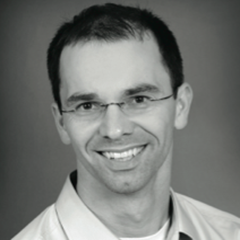Profitable development of forested land for renewable energy production has become possible only recently, based on changes in legal framework conditions, technological innovations and high wind-turbine towers. In Germany, some of these projects have been realised successfully and more seem likely to follow in the future. However, there is still considerable demand for research.
The rotor blades at the ‘Fasanerie’ wind farm, located in Bavaria, Germany, rotate around the hubs of the five wind turbines at a height of 138 metres. The cutting-edge wind turbines have harnessed wind at the windy, low-turbulence layers of air high above the tree-tops since 2010 and supply electricity for around 7,500 households. The model project is setting a precedent, raising the interest of forest landowners, municipalities, communities and investors in renewable energy production. No more than five years ago, the percentage of forest wind farm projects assessed by TÜV SÜD’s independent wind experts for their potential yield and profitability amounted to a mere one to two per cent. Today, one in 10 sites that are to be assessed for their suitability is located in a large forested area – and the numbers are rising.
Wind and wood: partners in the green energy revolution
The reasons for this trend are obvious. Modern wind turbines offer forest landowners a further option – apart from timber production – to put their land to profitable use. Combined, wood and wind power enable sustainable and environmentally-safe production of electricity, fuel and resources in many regions of Germany, reducing carbon emissions and thus stabilising our climate. In the long term, Germany’s domestic forests thus offer considerable potential for absorbing and storing the carbon dioxide in the atmosphere. This applies in particular if tree logs, wooden beams and boards are used as construction materials rather than fuels. Wind turbines, on the other hand, replace fossil-fired power station capacities, thus cutting carbon emissions in the long term. Around 17,500 tonnes of carbon dioxide per year are saved by the five wind turbines installed at the Fasanerie wind farm alone.
Robust data ensure precise forecasts
While today’s high-performance 2D and 3D simulation models enable highly precise forecasts of the potential annual yield to be drawn up, simulation results are only as good as the data used in the calculations. However, many regions in Germany lack validated data as forests have not moved into the focus of stakeholders until very recently. In those rare cases where regional measured data are available, these data often do not extend to the required layers of air, as met masts have rarely been higher than 100 metres in the past.
Forested sites, however, require hub heights of at least 120 metres and rotor blades that do not operate in the layers of increased turbulence above the tops of the trees. Increased turbulence reaches up to heights of three times the tree height (up to 90 metres). Swirling winds and critical turbulence cause vibrations of the rotor blades, exposing them to significant stresses, and adversely affect the stability and service life of wind turbines and their components.
Given this, forest locations must offer higher profitability than wind sites situated on open land, as yield – which depends largely on the rotor diameter – can only be increased by using larger rotors, which in turn require higher hub heights to avoid the zone of increased turbulence. In view of the greater heights involved, this generates higher purchase, design and construction costs and therefore requires a differentiated cost-benefit analysis.



























